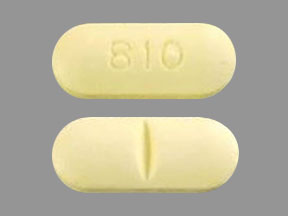Salsalate Dosage
Medically reviewed by Drugs.com. Last updated on Oct 24, 2024.
Applies to the following strengths: 500 mg; 750 mg
Usual Adult Dose for:
Additional dosage information:
Usual Adult Dose for Osteoarthritis
3000 mg orally per day in 2 or 3 divided doses
Comments:
- Lower doses may be necessary to achieve therapeutic blood concentration and to avoid more common side effects (e.g., auditory effects).
- Alleviation of symptoms is gradual and full benefit may not be achieved for 3 to 4 days.
Uses: For the relief of signs and symptoms of osteoarthritis, rheumatoid arthritis, and related rheumatic disorder
Usual Adult Dose for Rheumatoid Arthritis
3000 mg orally per day in 2 or 3 divided doses
Comments:
- Lower doses may be necessary to achieve therapeutic blood concentration and to avoid more common side effects (e.g., auditory effects).
- Alleviation of symptoms is gradual and full benefit may not be achieved for 3 to 4 days.
Uses: For the relief of signs and symptoms of osteoarthritis, rheumatoid arthritis, and related rheumatic disorder
Renal Dose Adjustments
Advanced renal dysfunction: Not recommended; if therapy is necessary, closely monitor renal function.
Liver Dose Adjustments
- Patients who have an abnormal liver test or who develop signs or symptoms of liver dysfunction should be evaluated for a more severe hepatic reaction.
- If liver disease develops or if systemic manifestations such as eosinophilia or rash occur, this drug should be discontinued.
Dose Adjustments
Elderly patients may require lower doses due to increased risk for adverse effects.
Precautions
US BOXED WARNINGS: RISK OF SERIOUS CARDIOVASCULAR AND GASTROINTESTINAL EVENTS:
- Nonsteroidal anti-inflammatory drugs (NSAIDs) cause an increased risk of serious cardiovascular (CV) thrombotic events, myocardial infarction, and stroke, which can be fatal. This risk may occur early in treatment and may increase with duration of use.
- This drug is contraindicated in the setting of coronary artery bypass graft (CABG) surgery.
- NSAIDs cause an increased risk of serious gastrointestinal (GI) adverse events including bleeding, ulceration, and perforation of the stomach or intestines, which can be fatal. These events can occur at any time during use and without warning symptoms. Elderly patients and patients with a prior history of peptic ulcer disease and/or GI bleeding are at a greater risk for serious GI events.
This drug is not recommended for use in children.
Consult WARNINGS section for additional precautions.
Dialysis
Data not available
Other Comments
General:
- Prior to initiating treatment, the potential benefits and risks of this drug should be weighed against other treatment options.
- The lowest effective dose for the shortest duration consistent with individual patient treatment goals should be used.
- Following initial response to therapy, dose and frequency should be adjusted to suit individual patient needs.
- There is no evidence of tachyphylaxis, however, salicylate therapy may induce increased activity of metabolizing liver enzymes, leading to a greater rate of salicyluric acid production and excretion, with a resultant increase in dosage requirement for maintenance of therapeutic serum salicylate levels.
Monitoring:
- Cardiovascular: Monitor blood pressure closely during initiation and throughout the course of therapy.
- Gastrointestinal: Monitor for signs/symptoms of gastrointestinal bleeding.
- Genitourinary: Regularly monitor urinary pH as sudden acidification (pH 6.5 to 5.5) can double the plasma level, resulting in toxicity.
- Hematologic: Monitor hemoglobin and hematocrit in patients on long-term therapy.
- Metabolic: Periodically monitor plasma salicylic acid concentrations during long-term therapy to aid maintenance of therapeutically effective levels (10 to 30 mg/100 mL).
- Monitor blood counts, renal, and hepatic function periodically for patients receiving long-term therapy.
Patient advice:
- Patients should seek medical advice for signs and symptoms of gastrointestinal events, adverse skin reactions, allergic reactions, hepatotoxicity, or unexplained weight gain or edema.
- Patients should seek medical attention immediately if signs/symptoms of cardiovascular events occur including, shortness of breath, slurred speech, chest pain, or weakness on one side of the body.
- Patients should talk to their health care provider if they are pregnant, planning to become pregnant, or breastfeeding; this drug should not be used during late pregnancy.
More about salsalate
- Check interactions
- Compare alternatives
- Pricing & coupons
- Reviews (5)
- Drug images
- Side effects
- During pregnancy
- Drug class: salicylates
- Breastfeeding
- En español
Patient resources
Other brands
Professional resources
Related treatment guides
See also:
Further information
Always consult your healthcare provider to ensure the information displayed on this page applies to your personal circumstances.


